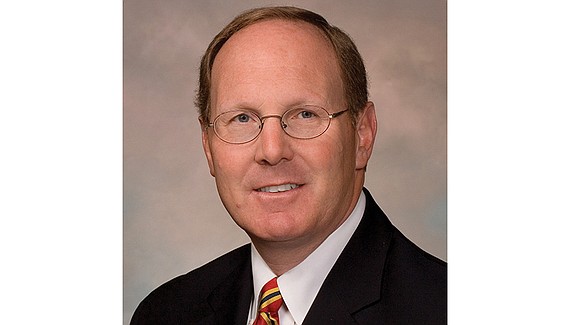City challenged to find $ for new school buildings
Jeremy M. Lazarus | 12/15/2017, 8:51 a.m.
The likelihood that City Hall will rush to build new school buildings under a plan the Richmond School Board is advancing appeared to dim at an Education Compact meeting Monday with Mayor Levar M. Stoney and Richmond City Council.
Under the plan approved last week without a public hearing, a split School Board is calling on the city to provide $224.8 million over the next five years to replace George Wythe High, Elkhardt-Thompson Middle and Greene, George Mason and Woodville elementary schools. In addition, the plan calls for renovations at J.L. Francis Elementary and the start of renovations at Fairfield Elementary.
It represents the first phase of the board’s 20-year plan to spend a projected $800 million to replace or renovate 39 buildings.
The issue is a top priority for city residents, who overwhelmingly approved on Nov. 7 a referendum to improve Richmond’s dilapidated schools.
One big challenge that was evident at the meeting: Finding the money, still a highly uncertain matter despite widespread agreement from all the Education Compact members that school modernization needs to be dealt with.
New School Board member Kenya Gibson, 3rd District, made that point.
“We’ve had plans again and again, and nothing’s happened,” she said. “Unless we start to focus our conversation on funding, nothing will happen.”
And funding did come up.
During the next five years, Richmond would be able to borrow $294 million, the city’s financial adviser noted in providing a financial overview.
But City Council already has approved borrowing $227.8 million for a host of other projects, ranging from new sidewalks to a new communications system, according to the adviser, David Rose of Davenport & Co.
The bottom line: Unless City Council scraps that approved borrowing, or finds a way to generate new revenues such as raising taxes, the city would have only $66 million in new borrowing capacity from 2019 to 2023, he told the assembled elected officials at the Richmond Police Training Academy.
The $66 million would be at least $158 million short of what the School Board has requested. If the $66 million is devoted entirely to schools, the council would be precluded from using it for other projects.
Mr. Rose noted that Richmond also will be moving closer to hitting its self-imposed ceiling on the amount of tax dollars used to repay debt. Repayment of debt already accounts for about 9 percent of the city’s general fund, with about $65.2 million to be spent in the current 2017-18 fiscal year, Davenport’s data show.
Based on current debt and the $227.8 million in new debt that council has authorized, the city would need to spend an additional $9 million to $19.6 million on debt, peaking at $84.85 million in 2023 before slowly declining, according to Davenport data.
That extra money for debt service could sop up a major chunk of the $30 million to $40 million or so in additional revenue that Richmond projects earning in each of the next five years from taxes and other sources, the data indicates.
Mr. Rose told the officials that Richmond would have more borrowing capacity after 2023 due to repayment. He projected that between 2024 and 2028, the next five-year period, Richmond could borrow $415 million for all city needs, including school buildings.
Mayor Stoney did not speak about school funding at the meeting, but has previously said he is committed to finding the funding for a school modernization plan that emerges from the Education Compact.
Paul Goldman, who led the effort to put school modernization on the Nov. 7 ballot, did not attend, but has used postings on Facebook to continue to argue that the money is available to fix the city’s public school buildings without raising taxes. In his view, the city is making excuses for its refusal to create a fully funded plan to make it happen.
Discussion at the meeting showed that the School Board has yet to sell members of City Council on its first phase proposal, let alone its plans for the other school buildings.
Councilman Michael J. Jones, 9th District, expressed concern that the School Board wanted to build a new Greene Elementary with a 1,000-student capacity, or far larger than current elementary schools.
Also expressing skepticism was Councilwoman Kim B. Gray, 2nd District, who spent 18 months as a School Board member helping to develop a past plan for school modernization that essentially did not garner any funding.
She was critical of the School Board’s decision to avoid closing any school buildings and to maintain in large part the current smaller, neighborhood buildings.
“Those small buildings have been failing kids for decades,” Ms. Gray said.
Along with Councilman Parker C. Agelasto, 5th District, she pointed to the need for any plan to focus on upgrading instruction and improving student outcomes, not use money on providing better buildings.
“If we’re spending money on facilities and not on instruction,” she said, “we’re going again in the wrong direction.”
Mr. Agelasto emphasized that educational outcomes is “where we have to prioritize.”
Interim schools Superintendent Thomas E. “Tommy” Kranz said he remains optimistic that the mayor and the council will come around and eventually agree on the importance of building some new school buildings, particularly the new Greene, Elkhardt-Thompson and George Wythe, which are becoming overcrowded as student populations on South Side grow, particularly with the increasing enrollment of Latino students.
“We’ll have to wait and see,” he said.








